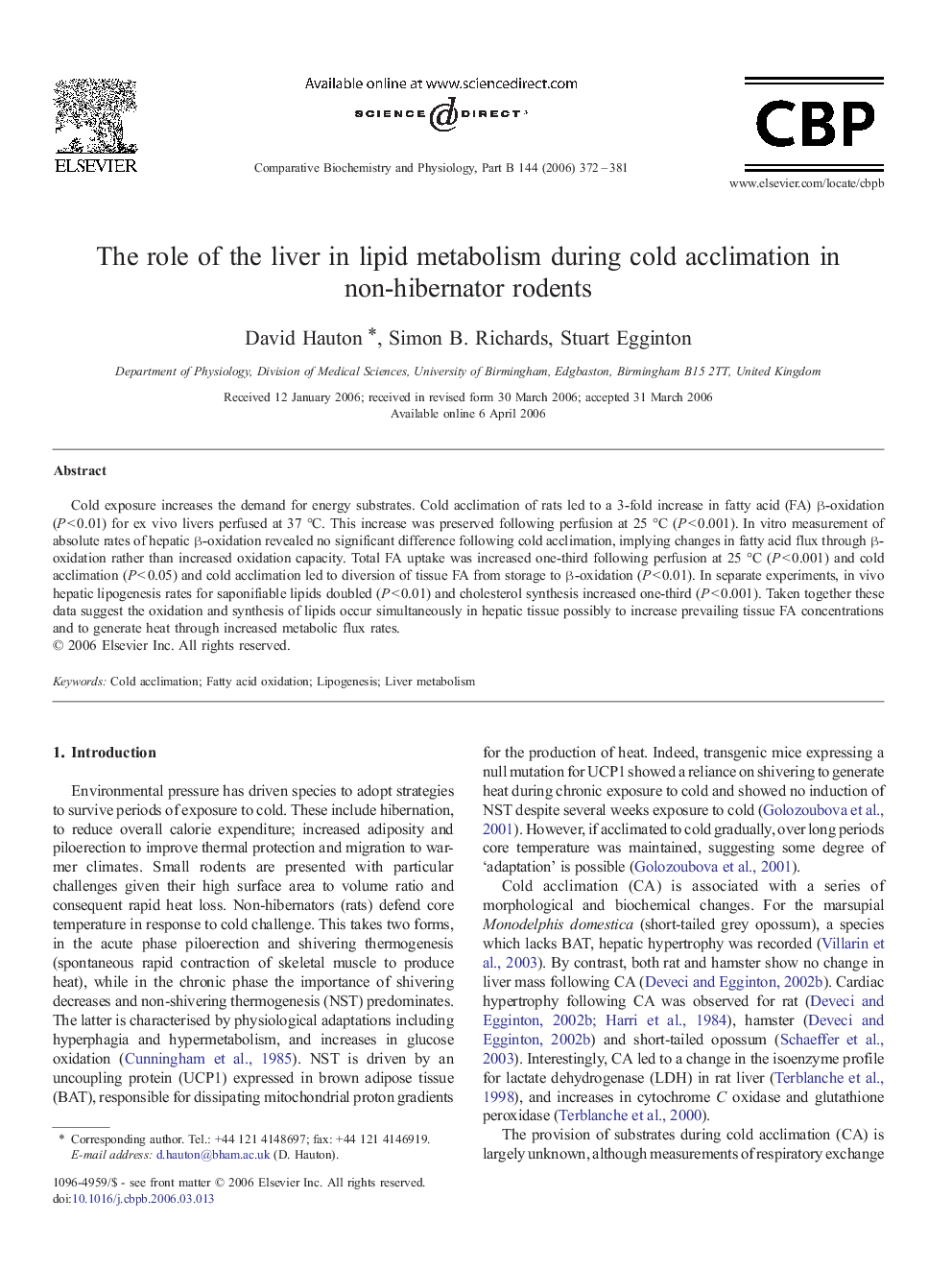| Article ID | Journal | Published Year | Pages | File Type |
|---|---|---|---|---|
| 1976742 | Comparative Biochemistry and Physiology Part B: Biochemistry and Molecular Biology | 2006 | 10 Pages |
Cold exposure increases the demand for energy substrates. Cold acclimation of rats led to a 3-fold increase in fatty acid (FA) β-oxidation (P < 0.01) for ex vivo livers perfused at 37 °C. This increase was preserved following perfusion at 25 °C (P < 0.001). In vitro measurement of absolute rates of hepatic β-oxidation revealed no significant difference following cold acclimation, implying changes in fatty acid flux through β-oxidation rather than increased oxidation capacity. Total FA uptake was increased one-third following perfusion at 25 °C (P < 0.001) and cold acclimation (P < 0.05) and cold acclimation led to diversion of tissue FA from storage to β-oxidation (P < 0.01). In separate experiments, in vivo hepatic lipogenesis rates for saponifiable lipids doubled (P < 0.01) and cholesterol synthesis increased one-third (P < 0.001). Taken together these data suggest the oxidation and synthesis of lipids occur simultaneously in hepatic tissue possibly to increase prevailing tissue FA concentrations and to generate heat through increased metabolic flux rates.
